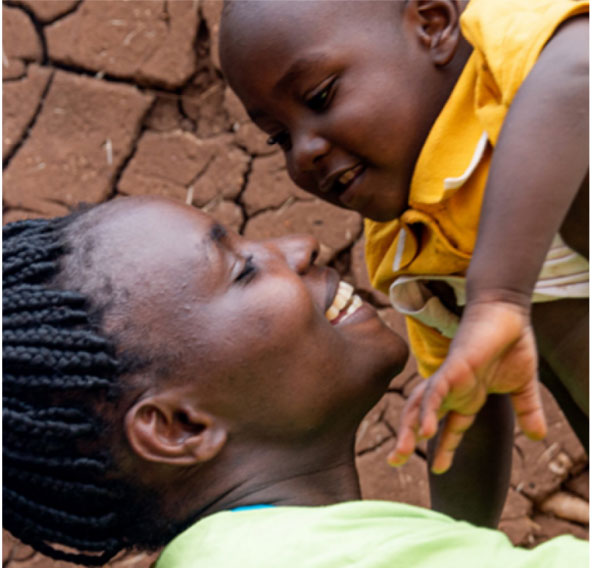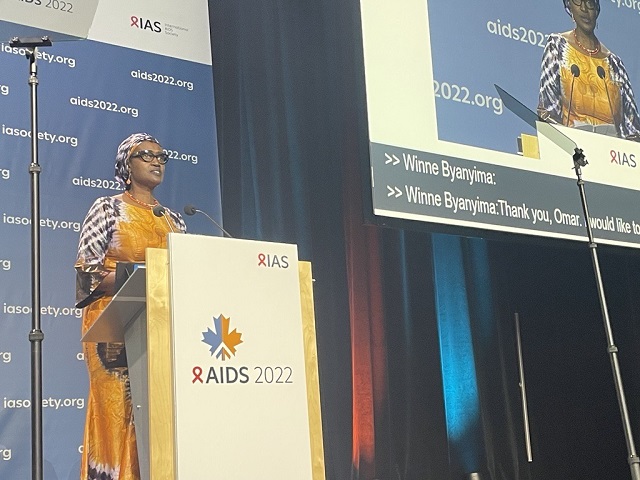
Uganda joins new global alliance with 4 new strategies
ANALAYSIS | RONALD MUSOKE | Uganda has joined 12 sub-Saharan African countries, three UN agencies, and several civil society movements to form a new alliance to work against HIV/AIDS in children and wipe it out by 2030.
The formation of the alliance was announced at the International AIDS Conference in Montreal, Canada, that ran from July 27—Aug.02.
Angola, Cameroon, Côte d’Ivoire, the Democratic Republic of the Congo (DRC), Kenya, Mozambique, Nigeria, South Africa, Uganda, Tanzania, Zambia, and Zimbabwe will work together with the UNAIDS, UNICEF, WHO, Global Fund, the President’s Emergency Plan For AIDS Relief (PEPFAR) and the Global Networks of People Living with HIV.
Concerned by the stalling of progress in children’s access to anti-retroviral therapy (ART), the alliance will over the next eight years work to fix one of the most glaring disparities in the AIDS response.
It seeks to prevent new infant HIV infections and close the widening gap between children and adults when it comes to access to life-saving HIV treatment. It also seeks to ensure that no child living with HIV is denied treatment by the end of this decade.
“No child should be born with or grow up with HIV, and no child with HIV should go without treatment,” says Dr Tedros Adhanom Ghebreyesus, the WHO Director-General.
He says: “The fact that only half of children with HIV receive antiretrovirals is a scandal, and a stain on our collective conscience. The Global Alliance to End AIDS in Children is an opportunity to renew our commitment to children and their families to unite, to speak and to act with purpose and in solidarity with all mothers, children and adolescents.”
The alliance has identified four pillars for collective action. They are: closing the treatment gap for pregnant and breastfeeding adolescent girls and women living with HIV and optimizing continuity of treatment, preventing and detecting new HIV infections among pregnant and breastfeeding adolescent girls and women, ensuring accessible testing, optimized treatment, and comprehensive care for infants, children, and adolescents exposed to and living with HIV, and addressing rights, gender equality, and the social and structural barriers that hinder access to services.
“The wide gap in treatment coverage between children and adults is an outrage,” said Winnie Byanyima, the executive director of UNAIDS, the joint United Nations Programme on HIV/AIDS during the Montreal conference.

“Through this alliance, we will channel that outrage into action. By bringing together new improved medicines, new political commitment, and the determined activism of communities, we can be the generation who end AIDS in children. We can win this – but we can only win together.”
During the conference, Limpho Nteko from Lesotho shared how she discovered she was HIV positive at age 21 while pregnant with her first child. This led her on a journey where she now works for the pioneering women-led mothers2mothers programme. She told the conference that an enabling community leadership is important for an effective response.
“We must all sprint together to end AIDS in children by 2030,” said Nteko. “To succeed, we need a healthy, informed generation of young people who feel free to talk about HIV, and to get the services and support they need to protect themselves and their children from HIV,” she said.
“Mothers2mothers has achieved virtual elimination of mother-to-child transmission of HIV for our enrolled clients for eight consecutive years—showing what is possible when we let women and communities create solutions tailored to their realities.”
UNAIDS reports note that of the 38 million people living with HIV around the world, 1.7 million of them are children aged 0-14 years and sub-Saharan Africa has 90% of these children. In Uganda, 95,000 children are said to be living with HIV. These usually contract HIV from their mothers during pregnancy, child birth, or breastfeeding.
Catherine Russell, the executive director of UNICEF noted that despite progress to reduce vertical transmission, increase testing and treatment, and expand access to information, children around the world are still far less likely than adults to have access to HIV prevention, care, and treatment services.
“The launch of the Global Alliance to End AIDS in Children is an important step forward – and UNICEF is committed to working alongside all of our partners to achieve an AIDS-free future,” Russell said.
About 57% of children with HIV in eastern and southern Africa are receiving ART, compared with 78% of the adults.
“This is partly because children, unlike adults may not express the pain often associated with HIV, and thus rely on their caregiver to assess their condition,” Mary Namubiru, the technical director at the Elizabeth Glaser Pediatric AIDS Foundation in Uganda recently told Devex, a US-based online publication whose focus is on global development issues.
Namubiru added that there are also significant challenges with ART resistance, particularly in children, whose rates of treatment success are consistently lower than those for adults across Africa.
“If resistance occurs, children then must move from first, then to second and then the third line treatment if the drugs don’t work,” she said.
HIV/AIDS continues to ruin Ugandan lives
Currently, there are about 1.4 million people living with HIV in Uganda according to the “Status of the national HIV/AIDS response in Uganda” report prepared by the Uganda AIDS Commission in 2021.
Disaggregated along gender, there are about 840,000 women aged 15 years and above living with HIV. On the other hand, the number of men (aged 15 years and above) living HIV are about 500,000. The same report notes that there are about 88,000 children living with HIV.
As of December 2021, Uganda had registered 54,000 new infections including 6000 children aged 0-14 years. In regards to death, there are 17,000 AIDS-related deaths every year with more men (7100) aged 15 years and above dying of AIDS-related illness than women (6300). About 4000 children aged 0-14 years die of AIDS-related illnesses every year.
The post Ending AIDS in children appeared first on The Independent Uganda:.
from The Independent Uganda: https://ift.tt/kgDqTiN
0 Comments